Not a mile down the road from the famed Edgbaston Cricket Ground and less than two miles from the city centre, in what was once a genteel neighborhood of Birmingham, is a refuge from urban sprawl - Edgbaston GC. After fledging starts at two previous locations, the course in place today is a 1936 Colt design with its routing fully intact. There are of course, as is the case with many classic courses, alterations to the tree and bunkering schemes. The tree plantings are almost without exception disastrous. The altered bunkering scheme is a bit hit and miss. Its obvious that later centre-line bunkers were added and some of Colt's bold bunkering was split into twos and threes, but other than aesthetics, the scheme generally works well. Despite the abundance of trees I am impressed with the design. The course uses the surprisingly hilly land to great effect and without exception the green sites are cunning in that they reward good positional play. In 2009/10 the club took the monumental step of relaying all the greens to improve drainage. It has taken some time, but the expense is now paying dividends as the greens are showing a marked improvement and highlight the full measure of Colt's creativity. Its a shame the club has yet to realize that the removal of trees would also help with drainage....
The first sight of the course from the terrace of the magnificent Edgbaston Hall is both invigorating and alarming. The sweeping panorama is marred by trees which greatly effect the strategy of both #s 1 and 9. If one looks closely, a red disc on a lovely tree can be spotted. It is used to signal those on #10 if it is ok to tee off by communicating one's intention to play 9 or 18. Red means don't tee off!
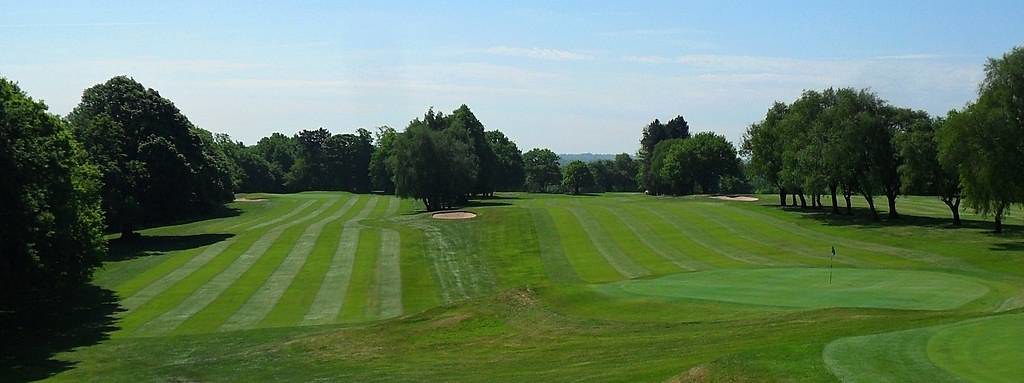
The second is a curious hole as reaching the dogleg requires a 260ish yard drive. Anything short is blocked out by trees on the left even though a bunker guarding the left of the green (which is not set to receive a shot from the left) is well placed for this purpose. One will also notice the rather awkward centre-line bunker which I suspect is not original.
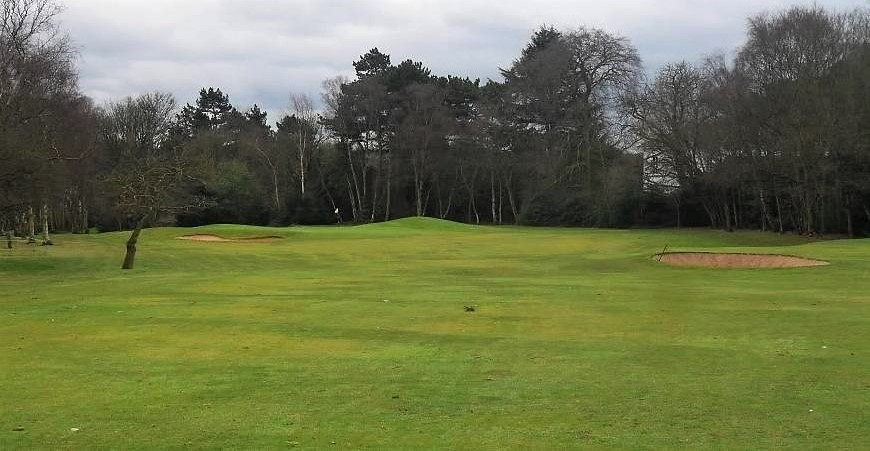
The view on the 3rd tee is exasperating to say the least. Rows of trees squeeze this shortish par 3 like a vice. Regardless, the brilliance of Colt's handiwork is quite evident in person. Thankfully, with a few major exceptions, from the 4th the trees don't crowd out many of Colt's superb design concepts. Below is a look at the approach to the long two-shot 4th. The large specimen trees are used very well in defining the dogleg to the left.
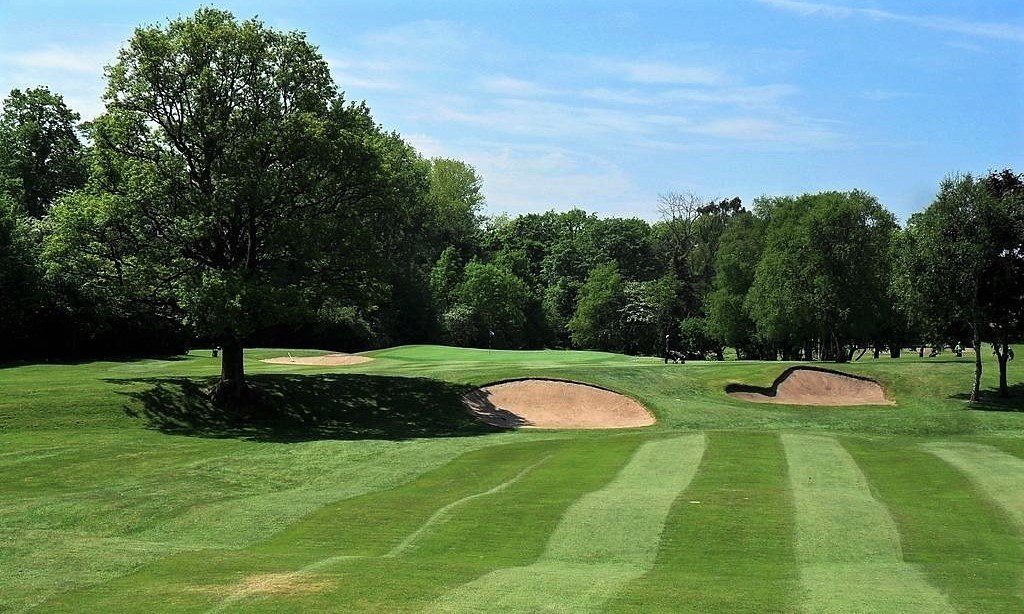
A look at the plateau where the green is located shows off lovely low rolling terrain and the bloody awful cut pattern.
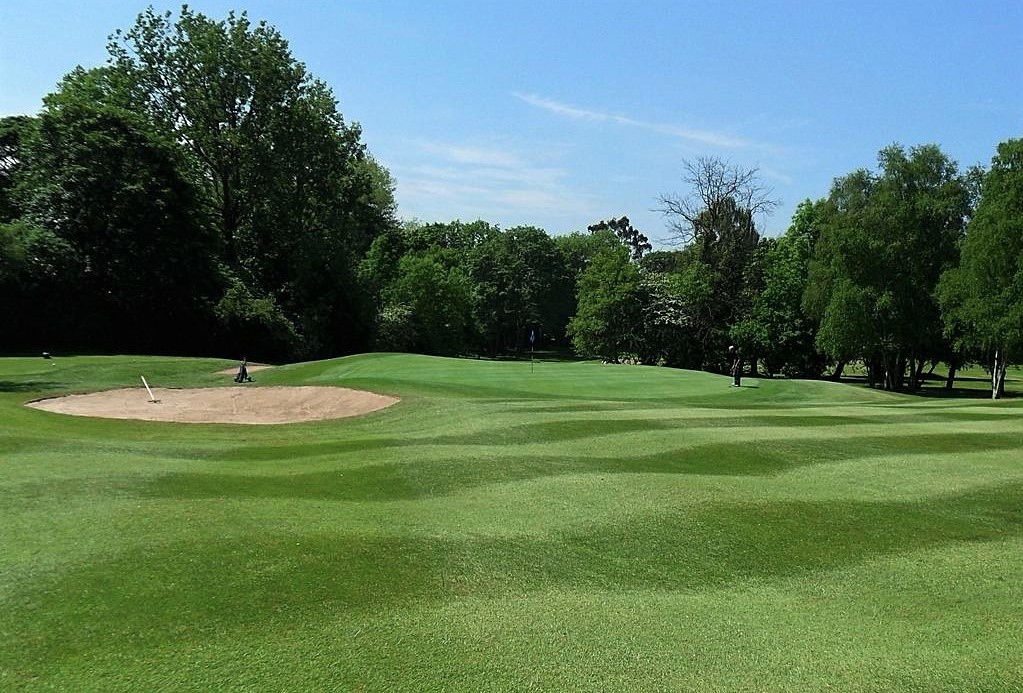
#5 is a cracking par 3 in which the strategy is fully evident. The club broke up a what once one large bunker into three.
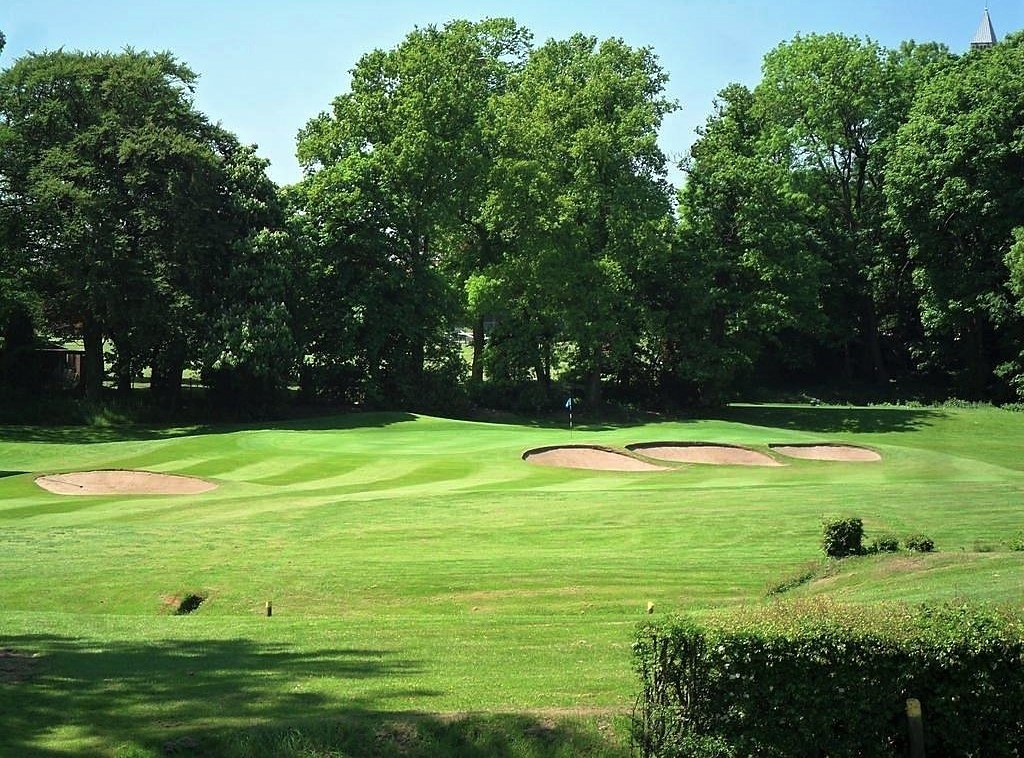
From this angle we can see how the green drops off on the far side creating a very narrow target.
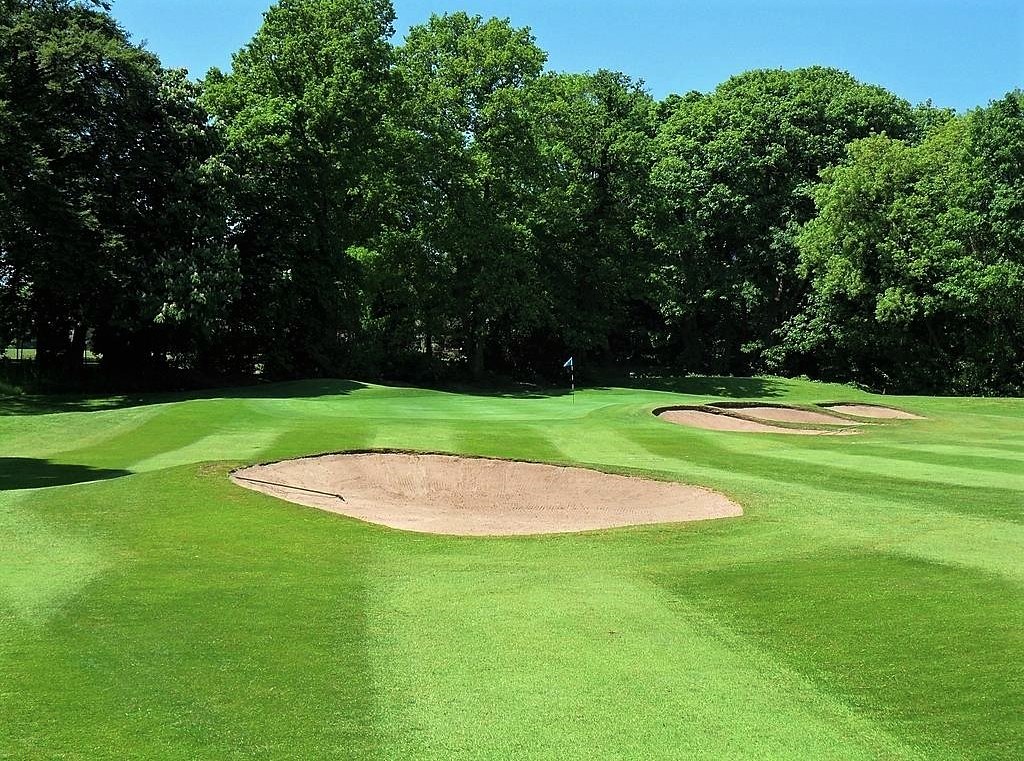
The purple patch continues on the 6th. The famed Edgbaston Cricket Ground can just be seen beyond the trees.
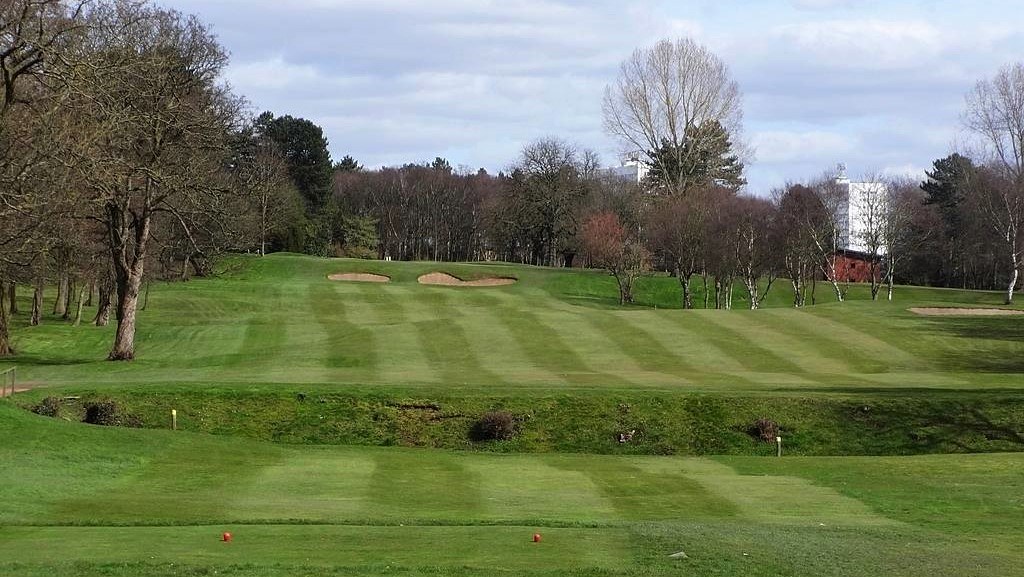
Playing into a sharp wind, carrying these bunkers on this banger par 4 can be quite a test. Even if one can't reach the green, clearing the bunkers offers the advantage of a view of the green for the third.
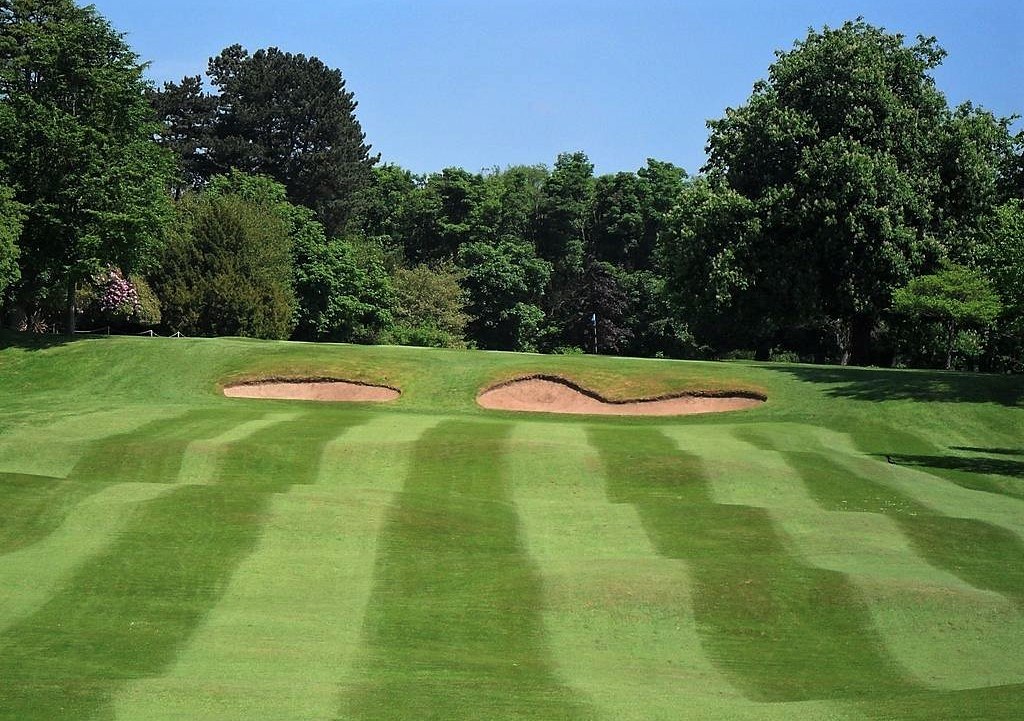
The green is incredibly small for such a demanding par 4.
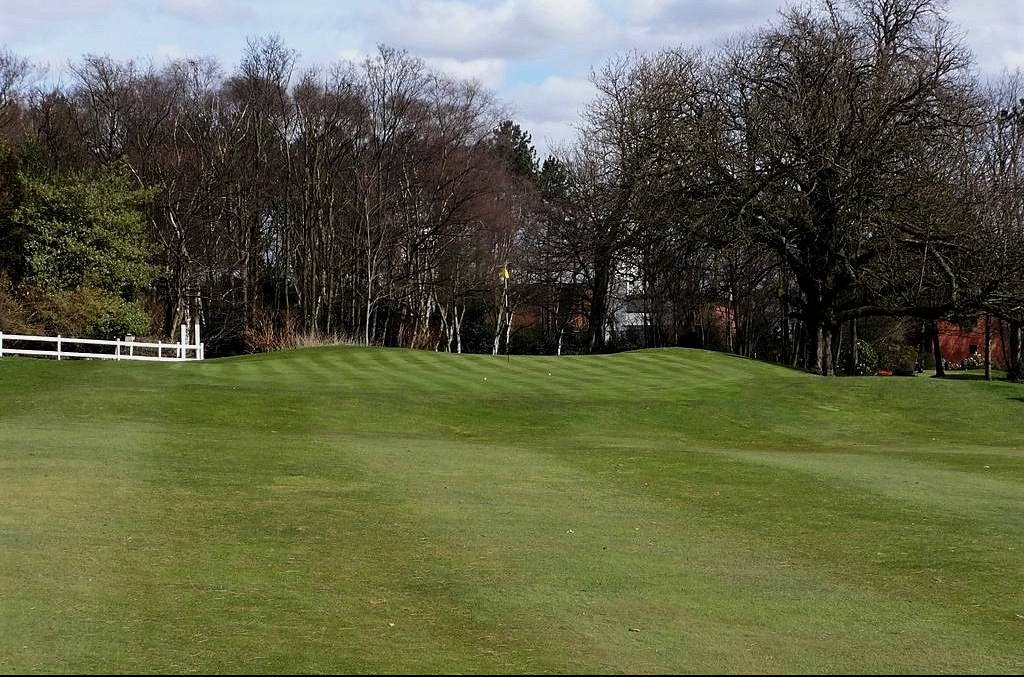
The 7th is a short drop shot hole with Birmingham University's Old Joe in the background. Based on the St Mark's Campanile, this clock tower was built to commemorate Joesph Chamberlain (father of Neville) as the first Chancellor of the university. The right bunker was recently removed and I believe the pond on the lower left is new.
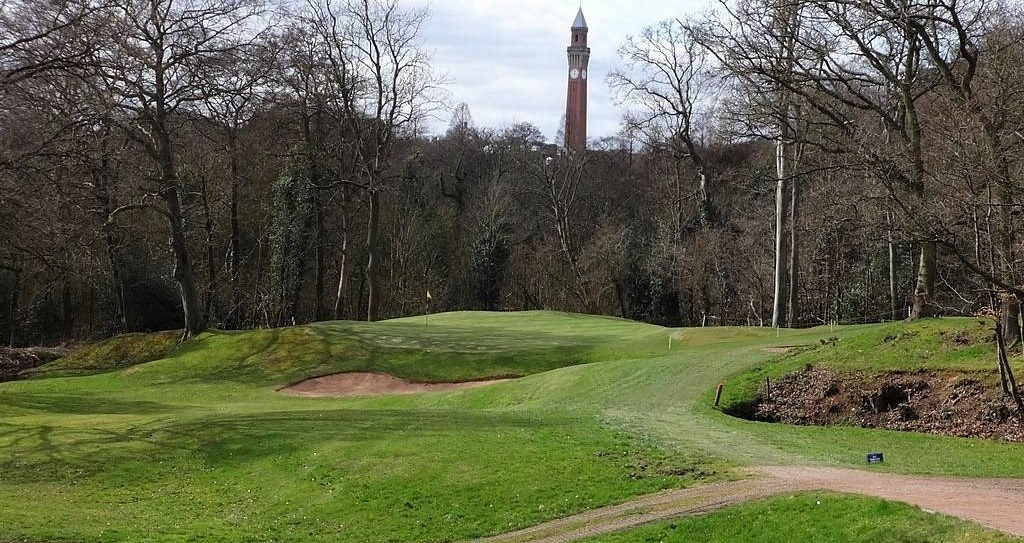
The following is another fine long par 4 with centre-line bunkers creating blindness. Once again, I think two bunkers have been created where Colt originally called for one bold bunker. Only the longest of hitters will contemplate carrying the cross bunkers. Most will face a long and blind second to a small green. Along with serious tree issues, Edgabston suffers from poor fairway lines. Its obvious there should be a fairway alley up the left leaving the rabbit a way around the sand, but with a poor angle of approach.
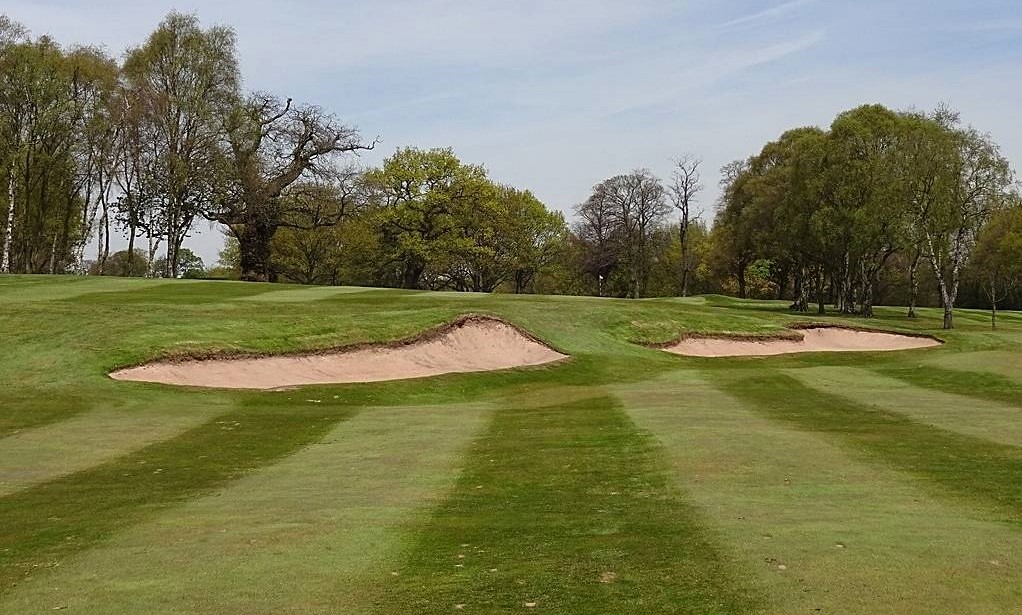
The green is a brilliant piece of trickery. Colt shaped the surface to look saddle-like or gathering, but the the lay of the land leaning heavily right is the dominant feature. Its very difficult to get oneself to putt opposite to the information the eye is delivering.
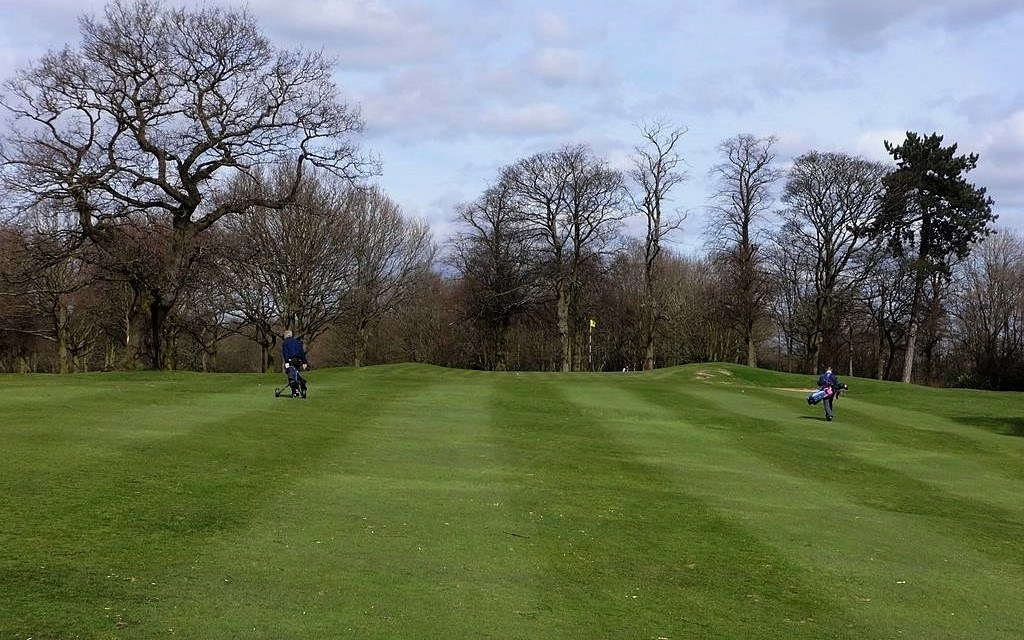
The view form the 9th tee should showcase Edgbaston Hall, a magnificent Georgian building. On a few occasions Colt's intended views of the hall are efforts nixed by thoughtless tree plantings. After the original hall was burned down near the end of the Civil War, Sir Richard Gough started the rebuild in 1717. Sir Richard's son, Sir Henry, inherited the estate and commissioned Capability Brown to design the park on which Colt's course now plays over. The hall is the clubhouse, but it remains the property of the Gough-Calthorpe family with a family member acting as President of the club.
William Withering, famous for discovering the medicinal properties in digitalis and also a member of the somewhat controversial provisional Lunar Society, lived at Edgbaston Hall for a spell.
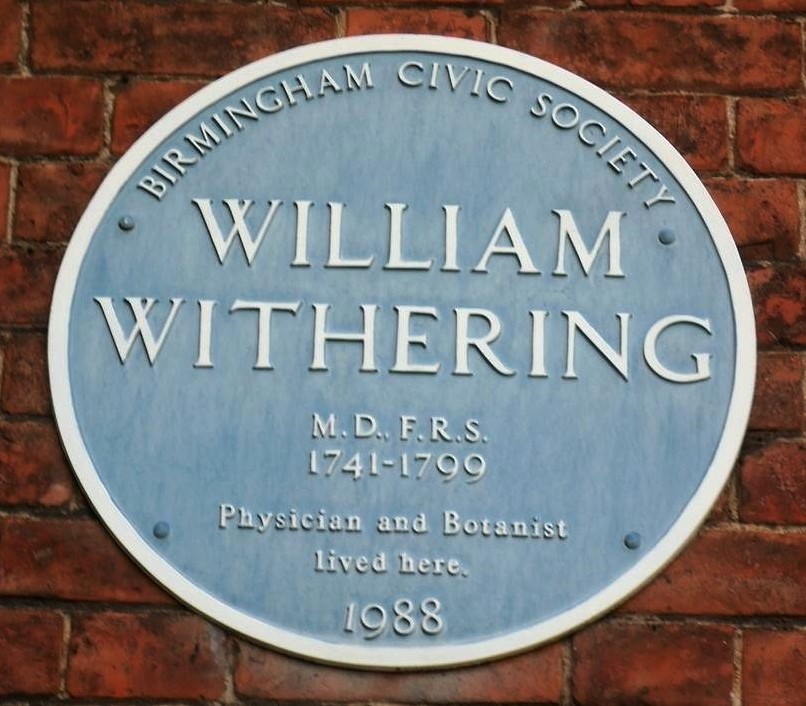
From just beyond the right fairway bunkers which Colt envisioned serving as a centre-line hazard to between the 1st and 9th fairway, one can see the view of the fantastically sited 9th green and hall. There is an obvious two tier effect to the green which was added sometime in the 1990s.
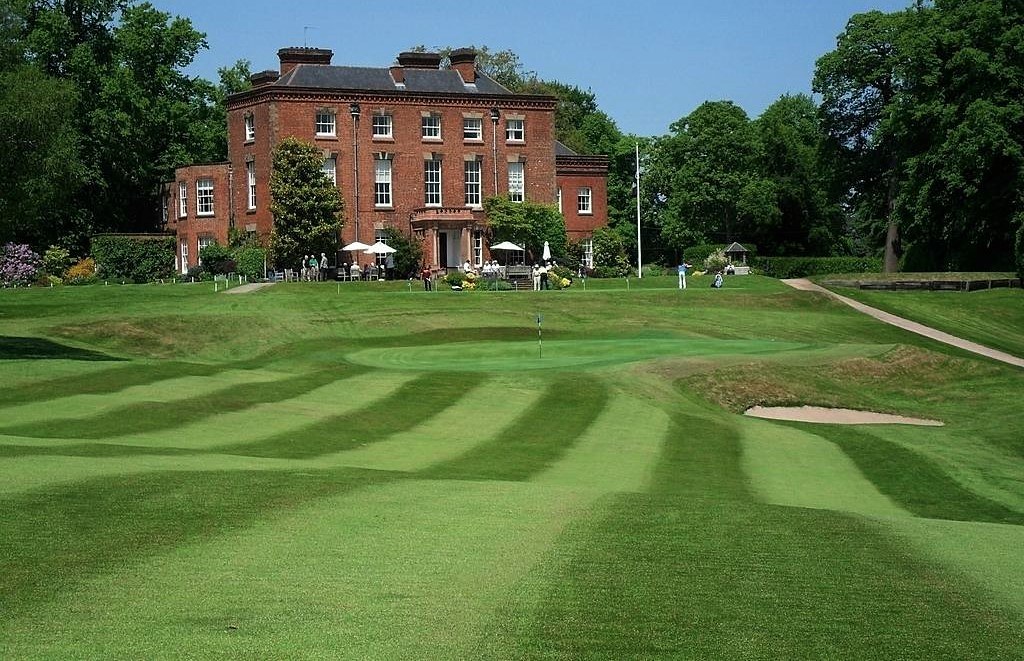
Golf radiates from the house, is there a better way to set up a course? Behind the green.
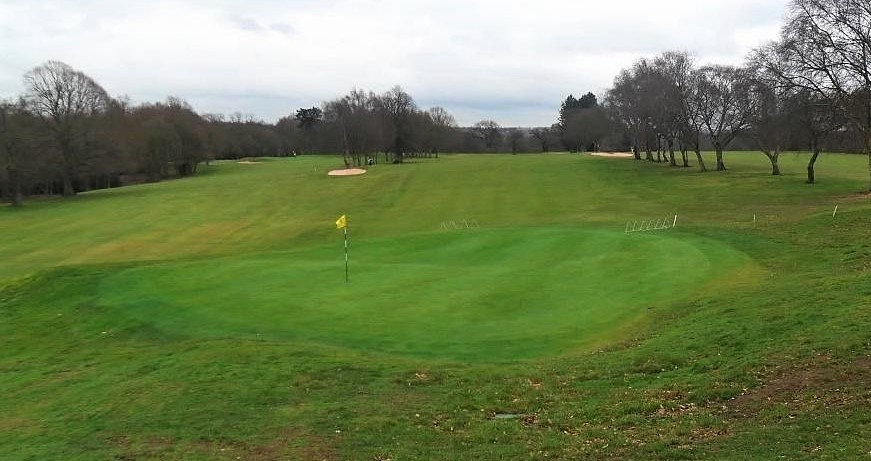
Edgbaston has several holes with blind drives over crests. The 10th is one of these holes. More importantly, the approach is spectacular over a valley to yet another well sited green. Notice the trademark Colt knobs in the rear of this photo of the 10th green.
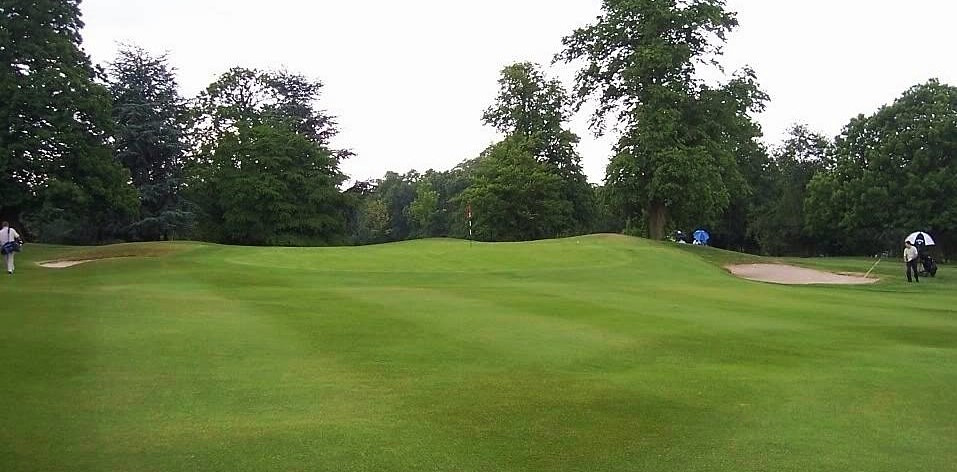
There are several short two-shotters balanced against a great collection of long 4s. The 11th is drivable, but it is probably wise to lay back as holding this small, undulating green is virtually impossible with a driver.
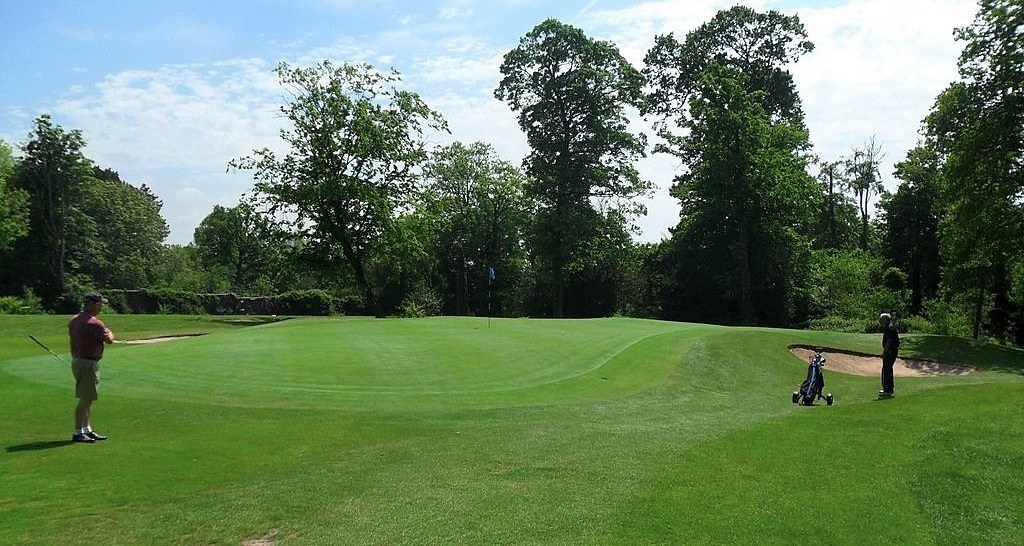
The following two holes drop to a low section of the course near Edgbaston Pool. #12 is a sweeping legger to the left with a blind centre-line bunker at the bottom of the hill. This bunker was not placed by Colt, but it is a good addition to keep flat bellies thinking Unfortunately, the workmanship on the bunker reduces its effectiveness. The background trees are a bit of an eyesore breaking up the vista toward the 13th fairway.

The par 4 13th is another hard dogleg left over or around the pool, its the player's choice. Interestingly, a curling stream which can't be seen from the tee bisects the fairway. I suspect this was added after Colt's time to improve drainage. Just beyond the course boundary is student accommodation. The 14th is a lovely par 3 which has recently seen a load of vegetation removed. The view from the tee is very deceptive as the putting surface is far smaller than the bunker scheme suggests. The hole is slowly revealed the closer the golfer comes to the green. It is a great pity there are only three short holes because all are very good...leaving the golfer wanting more.
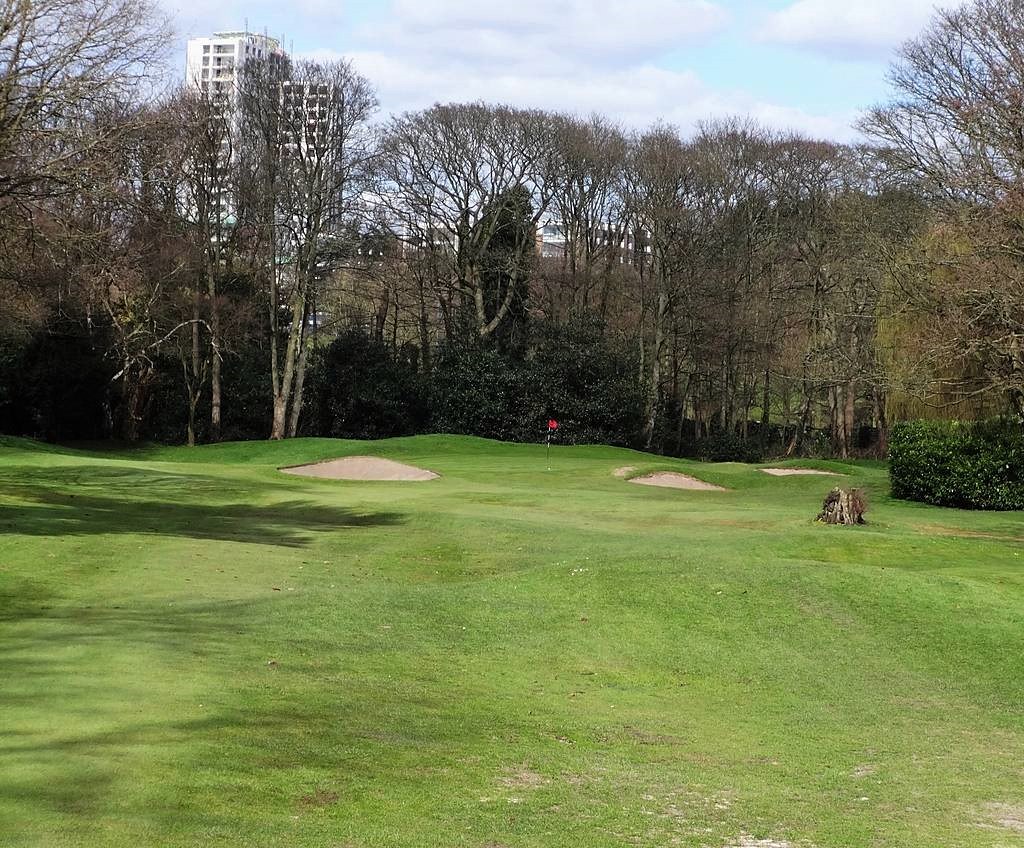
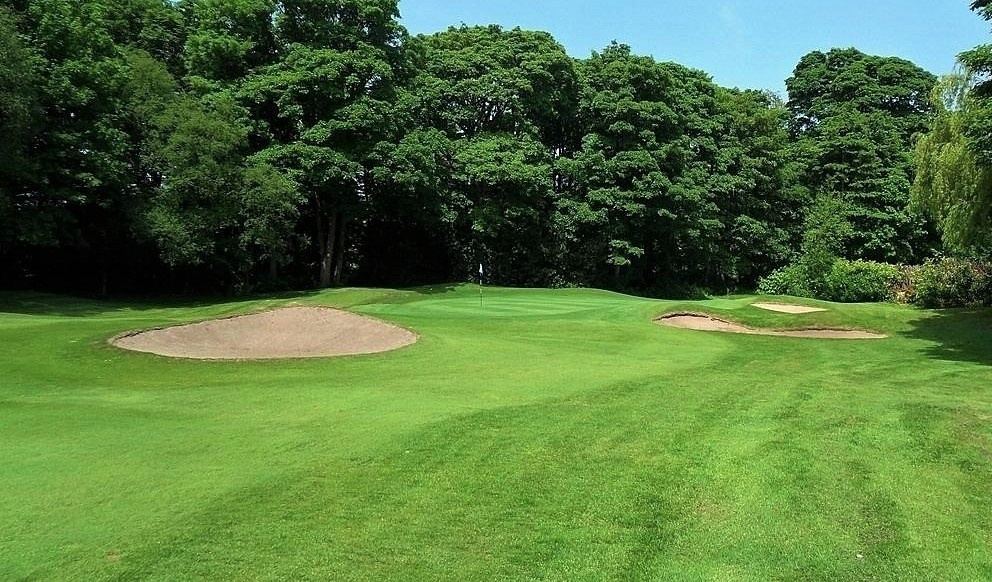
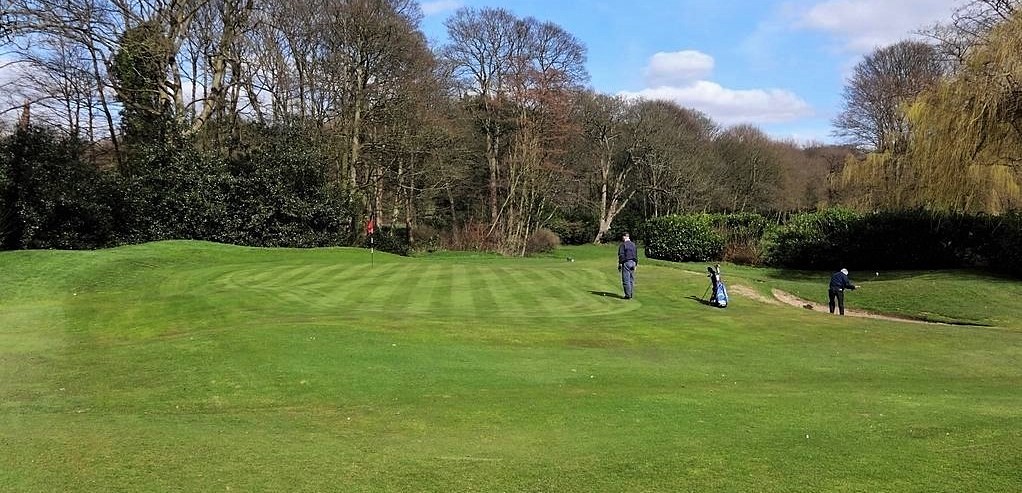
Unfortunately, because of tree crowding, Edgabston's finish doesn't match the quality of the long run of holes between 4 and 14. 15 and 16 (with the 16th being reachable off the tee) are short par 4s heading up then back down the hill the hall sits atop. Notice how the trees behind #15 block out the view of the hall. It is imperative and terribly difficult to keep the ball below the hole.
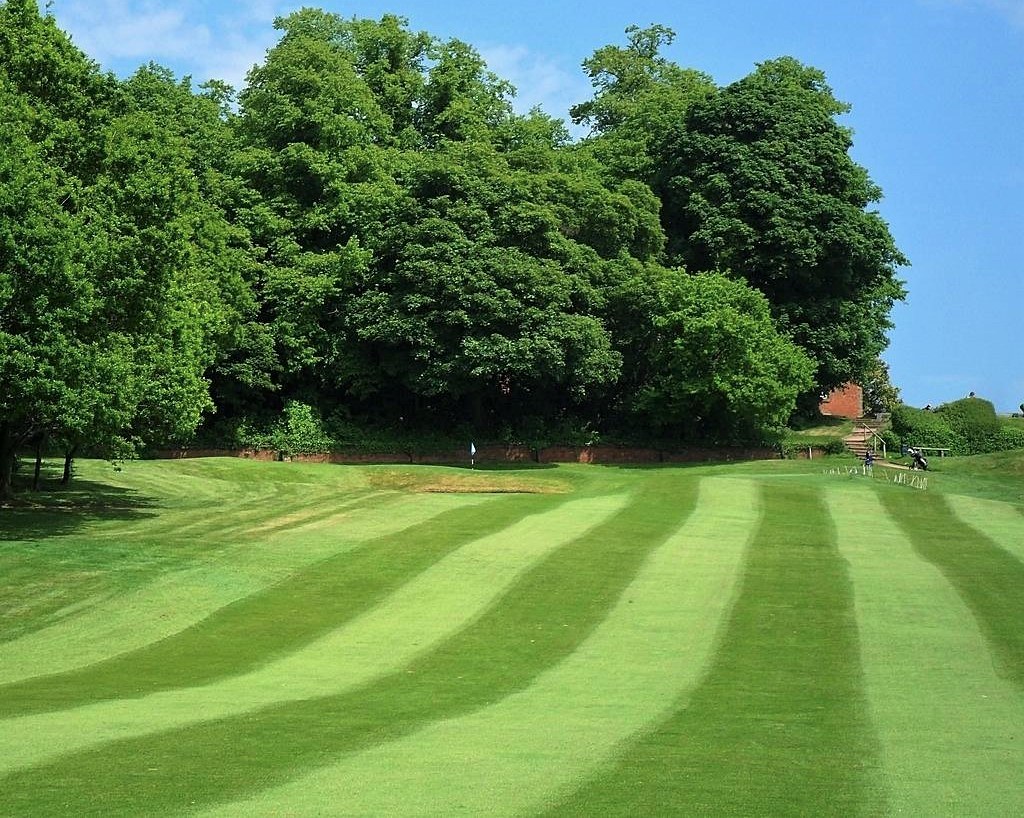
I wonder if the 16th wouldn't be better off as a long par 3? At well under 300 yards playing downhill many can reach the green. Though it must be said, the green is tricky and misses to the left require deft recovery skills. Short of the green is a swale which is a technique Colt used on a few of the green surrounds.
The finishing two holes are wonderful. #17, the only three-shotter on this par 69 layout, is tough because the best angle of approach up the left is guarded by trees and severely sloping terrain. The green is in a natural defensive position atop a plateau.
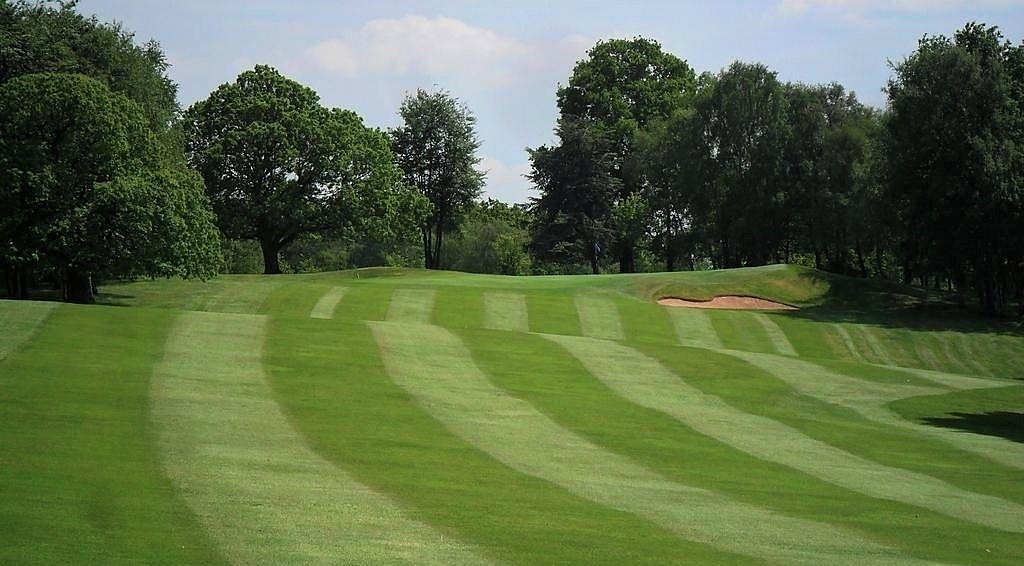
The final hole comes back on the 17th. I think Colt originally designed 17 & 18 to essentially share one very wide fairway. Indeed, the plans reveal that Colt intended the 18th to be a dogleg right as the hill would dictate this. However, the hill could also facilitate a well thought out approach to bounce around the front left bunker which, like many others, has been drastically reduced in size. Also notice how trees once again block the view of the hall to the right of the 15th green in the distance.
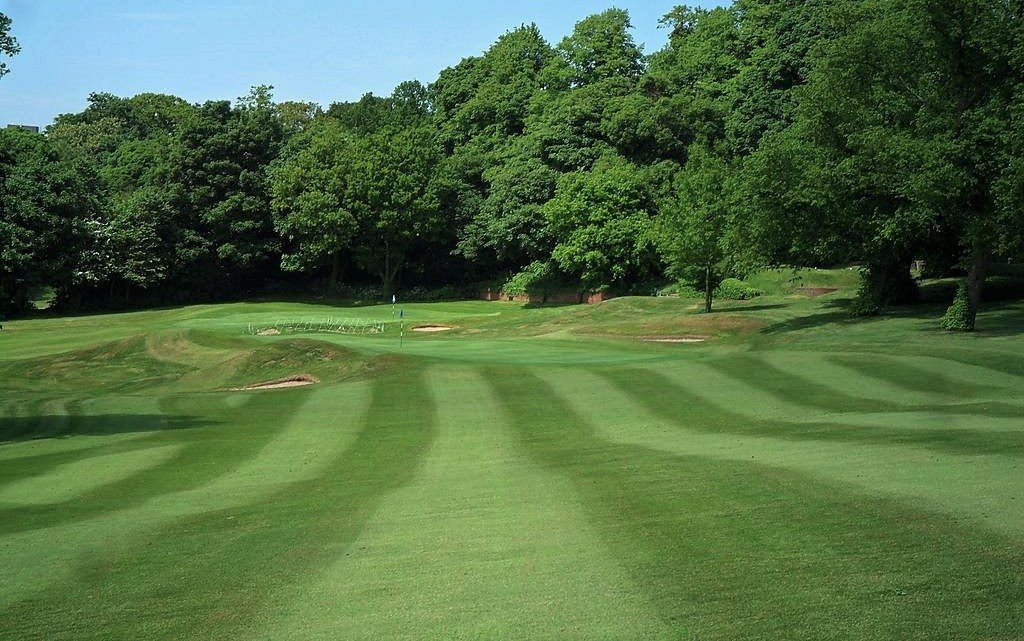
Edgbaston is a gem shrouded in foliage. If the club would take on an extensive tree removal program thereby opening some playing corridors, views of the course, hall and specimen trees, the majesty of this Capability Brown designed park course could be fully re-captured. Edgbaston is a mere 5800 yards from the daily tees. However, the overall yardage is very deceptive as Edgbaston is a rugged course featuring many long, difficult par 4s balanced by several short par 4s which are deceptively tricky and featuring an exceptional set of short holes. Colt's magnificent design shines through in the greens (one of the best sets I have seen from Colt) and make Edgbaston a special design. 1* 2016
Ciao